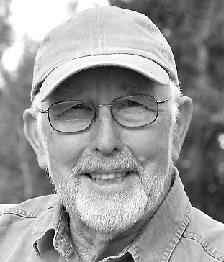While the celebration of Cascadia’s 40th year was postponed and will be held in the future, we are sad that two key people in Cascadia’s formation died earlier this year. For now, we will honor them with the following brief summaries describing their important role in our formation.
 John Peard, a founding member of Cascadia Research and a signatory of our articles of incorporation in 1979, died in Hawaii in February 2020. He was manager of the contaminant analysis laboratory (the “ECOP lab”) at Evergreen in the late 1970s when we first started conducting analyses of various marine mammal tissues and helped guide and teach us in contaminant analyses. Cascadia’s Project #5 (we currently are well over 500 in our series) in 1980-81 was on contaminants in humpback whales and John was the lead and senior author of the report on those results. He was a co-author on eight reports and publications with Cascadia through 1992. John was always incredibly supportive of our efforts and had a quiet and steady approach that helped balance some of the rest of our more vacillating efforts. He trained other students in laboratory procedures and was directly or indirectly involved in several student-originated studies at Evergreen. It was our loss when he moved to Hawaii and we will miss his kind, genuine and caring personality.
John Peard, a founding member of Cascadia Research and a signatory of our articles of incorporation in 1979, died in Hawaii in February 2020. He was manager of the contaminant analysis laboratory (the “ECOP lab”) at Evergreen in the late 1970s when we first started conducting analyses of various marine mammal tissues and helped guide and teach us in contaminant analyses. Cascadia’s Project #5 (we currently are well over 500 in our series) in 1980-81 was on contaminants in humpback whales and John was the lead and senior author of the report on those results. He was a co-author on eight reports and publications with Cascadia through 1992. John was always incredibly supportive of our efforts and had a quiet and steady approach that helped balance some of the rest of our more vacillating efforts. He trained other students in laboratory procedures and was directly or indirectly involved in several student-originated studies at Evergreen. It was our loss when he moved to Hawaii and we will miss his kind, genuine and caring personality.
 Steve Herman died on 3 April 2020 after teaching more than 35 years at the Evergreen State College. Many of Cascadia’s founding members, numerous student interns, and subsequent Cascadia members had been students of his during their time at Evergreen. Steve was the faculty advisor to the student-led project on harbor seals with a NSF Student-Originated-Studies Grant in 1977-78. Students involved in that project served as one of the core groups in founding Cascadia in 1979. Steve’s passion and love for birds was infectious as was his emphasis on documenting the natural world. While he referred to harbor seals as “beach maggots” and obviously not having the beauty of his beloved birds, he still played a major role in the project. He had an ability to generate perfectly constructed prose on a scientific topic or a note to students. He inspired many Evergreen students with his enthusiasm and creativity.
Steve Herman died on 3 April 2020 after teaching more than 35 years at the Evergreen State College. Many of Cascadia’s founding members, numerous student interns, and subsequent Cascadia members had been students of his during their time at Evergreen. Steve was the faculty advisor to the student-led project on harbor seals with a NSF Student-Originated-Studies Grant in 1977-78. Students involved in that project served as one of the core groups in founding Cascadia in 1979. Steve’s passion and love for birds was infectious as was his emphasis on documenting the natural world. While he referred to harbor seals as “beach maggots” and obviously not having the beauty of his beloved birds, he still played a major role in the project. He had an ability to generate perfectly constructed prose on a scientific topic or a note to students. He inspired many Evergreen students with his enthusiasm and creativity.